

William Stopford
Every SUV, ute and van discontinued in Australia in 2025
4 Hours Ago
While its fundamentals are on the verge of class-leading, the flagship Yaris Hybrid is let down by a premium price that isn't met with a premium cabin.
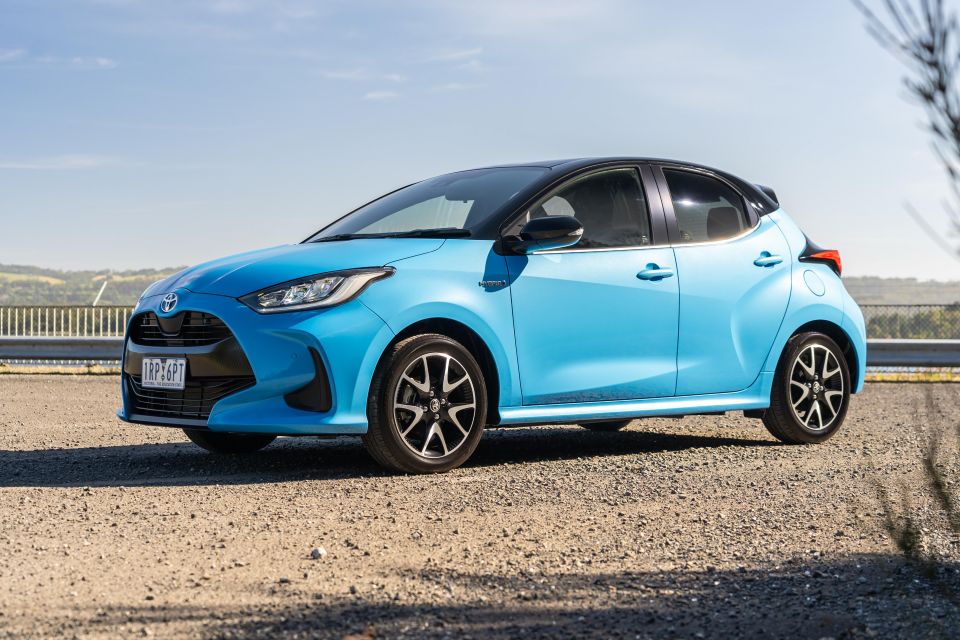
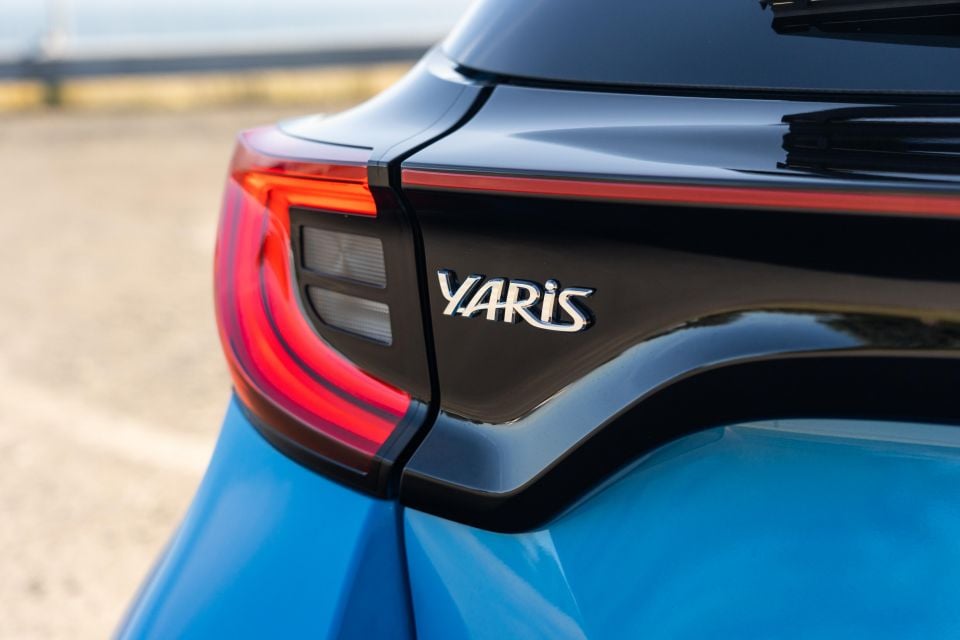

Marketplace Editor
New from
$32,100
excl. on-roads

Marketplace Editor
New from
$32,100
excl. on-roads


Marketplace Editor
New from
$32,100
excl. on-roads

Marketplace Editor
New from
$32,100
excl. on-roads
Quickly see how this car stacks up against its competition. Select any benchmark to see more details.
Where expert car reviews meet expert car buying – CarExpert gives you trusted advice, personalised service and real savings on your next new car.
Toyota’s entry-level light hatch has had an expensive glow-up.
After the previous generation served about seven years as one of Australia’s cheapest and most popular city cars, the fourth-generation Yaris arrives in 2020 with an overhauled look, loads of high-end technologies, and of course the controversial pricing to go with it.
Now starting at over $20,000 before on-road costs, the all-new Toyota Yaris isn’t far off its larger Corolla stablemate in terms of pricing, though counters with a more city-friendly compact body as well as similar levels of equipment. It’s also based on a smaller variation of the TNGA modular platform underpinning models like the Corolla, C-HR and RAV4.
Here on test we have the daddy of the core Yaris line-up in Australia – the ZR Hybrid.
It’s a smidge over $32,000 before on-road costs and pits Toyota’s once humble city car nameplate in the hitting zone of even premium light cars like the Audi A1 and Mini Hatch.
So, is the flagship Yaris worth the substantial spend?

At $32,100 before on-roads, the Yaris ZR Hybrid is bloody expensive for a mainstream light car. It’s dearer than top-shelf versions of all competitors by some margin – think Kia Rio, Mazda 2 and the Volkswagen Polo, all of which top out at under $30,000 before on-road costs.
In terms of premium-badged rivals, an Audi A1 30 TFSI starts at $32,750 plus on-roads, and the base Mini Cooper Classic 3 Door Hatch is $35,150 list.
The top-shelf Yaris is even up there with mid- to high-spec versions of mainstream vehicles from the size above.
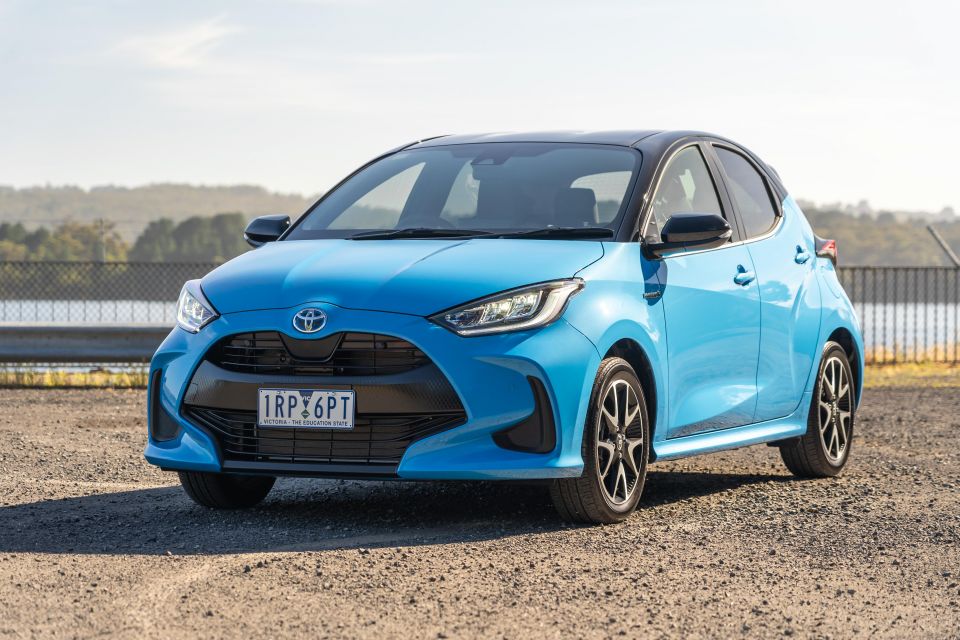
Within Toyota’s own range, you can get a Corolla ZR petrol for $32,695 list, and opt for petrol-electric hybrid power from $34,695. The soon-to-be-replaced Volkswagen Golf 7.5 110TSI Highline is $34,990 before on-roads, and the luxurious Mazda 3 can be had in G25 GT guise (one from top) for $34,090.
So, you’re not wanting for choice in this price bracket. If you’re already considering a premium light car you probably want the city-friendly dimensions, but it’s worth putting into perspective how many vehicles you can get for $30,000 to $35,000 – and good ones too.
It’s also worth noting that if you aren’t keen on making the switch to hybrid just yet, the Yaris ZR can be had in thrummy three-cylinder petrol-only ZR trim from $30,100 list. Read Curt’s review here.
Our tester is finished in Eclectic Blue metallic with contrasting black roof, together asking for an additional $950. So the car you see here is $33,050 before on-road costs, or an estimated $35,200 drive-away (metro Vic).
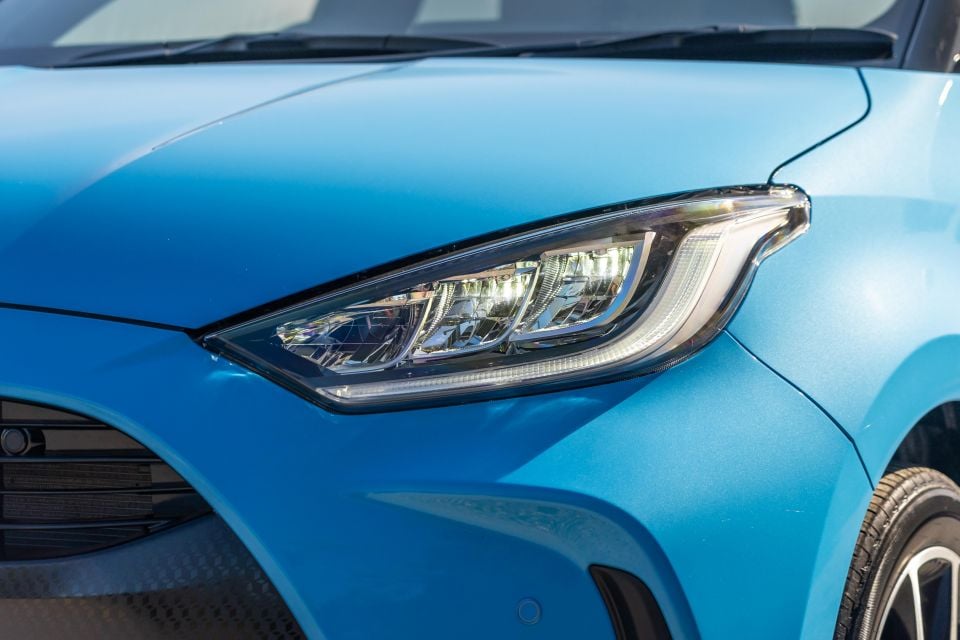
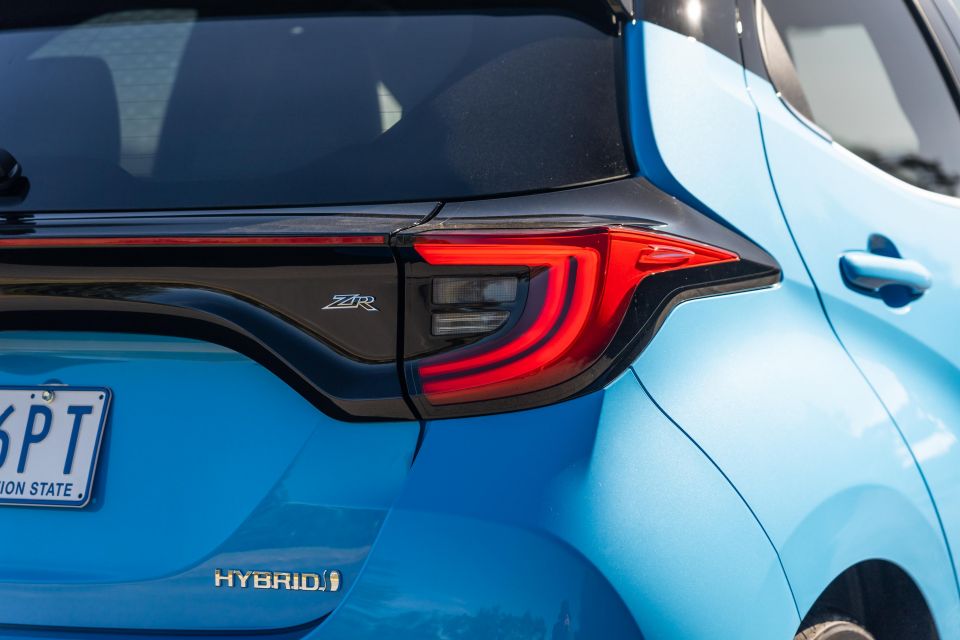
Buy your new car without the stress. It's fast, simple and completely free.

Great service from Travis and team, second time I have used this business would not hesitate to recommend them to anyone
Craig C.
Purchased a Ford Ranger in Sunshine Coast, QLD
CarExpert helped Craig save thousands on his Ford Ranger, now let us save you on your next new car.
Find a dealQuite a bit.
The flagship Yaris features 16-inch machined alloy wheels, front sports seats trimmed in a model-specific fabric, a large colour head-up display, rear spoiler, blind-spot monitoring with rear cross-traffic alert, red interior accents for the dashboard and door trims, and the option of a contrasting roof.
Features carried over from lower trims include keyless entry with push-button start, LED headlights and daytime-running lights, LED tail lights, a digitised LCD instrument binnacle, leather-accented steering wheel, soft-touch dash, single-zone climate control, rear privacy glass, a 7.0-inch infotainment touchscreen with satellite navigation, Apple CarPlay and Android Auto (wired), a reversing camera, and power-folding side mirrors.
The Yaris also comes with a smattering of active safety features right across the range, including autonomous emergency braking with pedestrian and cyclist detection, adaptive cruise control, auto high-beam, lane keep assist with lane departure warning and lane tracing assist, and speed sign recognition.
We’ll touch on the safety kit more in the next section, but safe to say the Yaris shames numerous cars from its own segment and the segment above for standard safety inclusions.
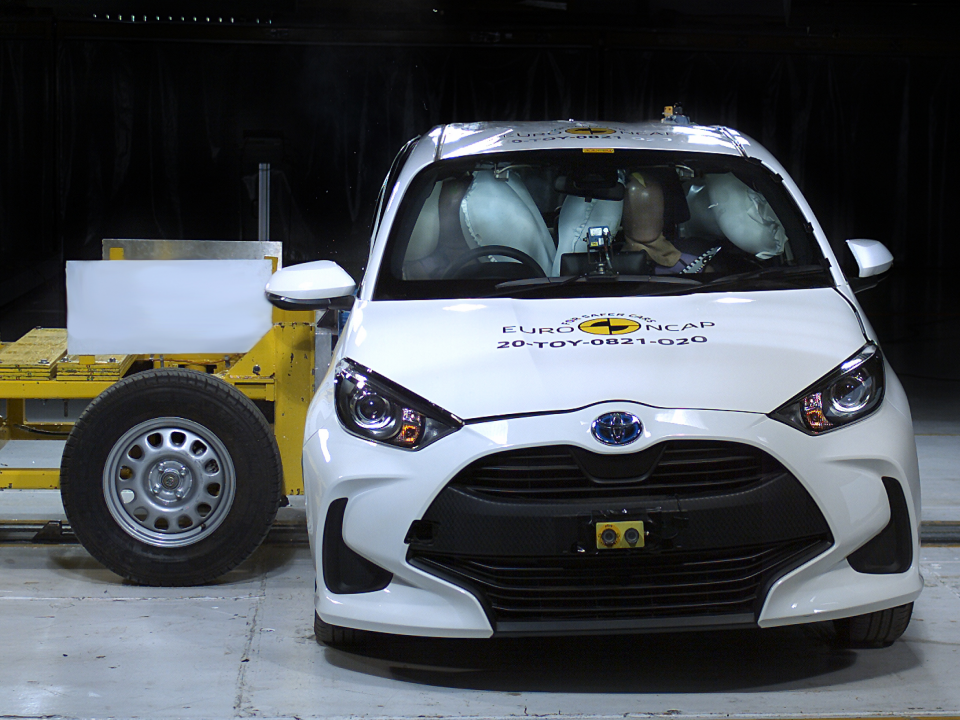
Tested against the latest, strictest 2020 criteria, the Toyota Yaris scored a five-star ANCAP and Euro NCAP safety rating.
Category scores included 86 per cent for adult occupant protection, 87 per cent for child occupants, 78 per cent for vulnerable road users and an impressive 87 per cent for safety assist.
One of the reasons for the lower adult occupant score was the new frontal offset barrier test introduced for 2020 testing. In this assessment the Yaris only showed ‘marginal’ protection for the driver’s chest and legs.
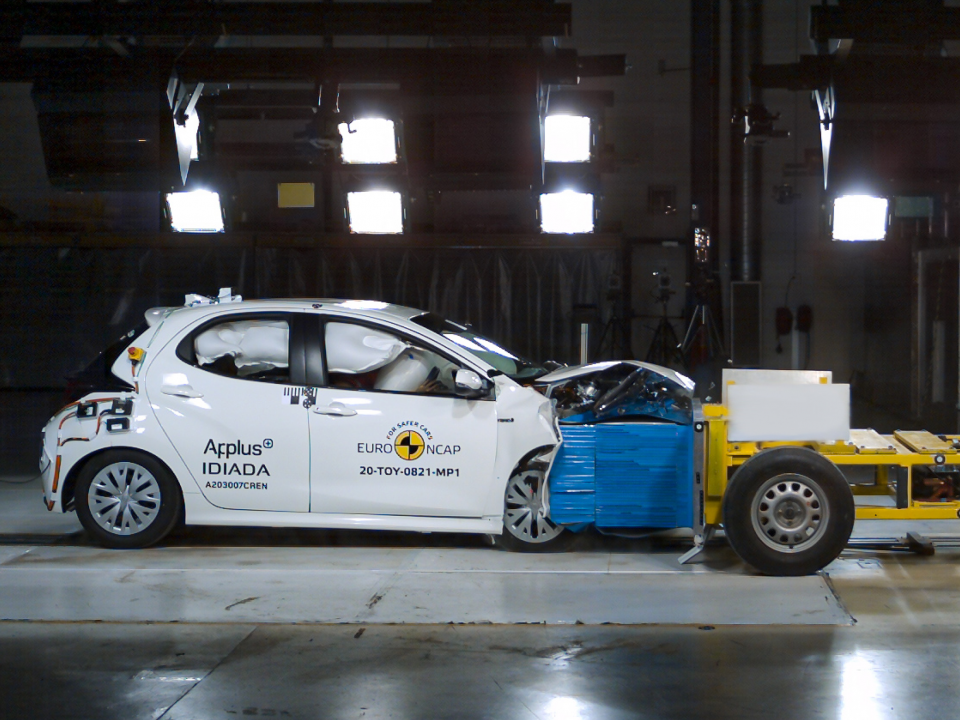
Despite this, it scored full points for the protection of adult occupants in both the side impact and oblique pole tests, and for the protection of child occupants in the side impact scenario
The little Toyota was also praised for its sophisticated active safety systems, which earned it a very high safety assist score.
Dual frontal, side chest and side head (curtains) airbags are standard on all models, as well as a centre airbag which provides added protection to front seat occupants in side impact crashes.
Autonomous emergency braking (Car and Vulnerable Road User) as well as lane keep assist with lane departure warning, emergency lane keeping and an advanced speed assistance system are fitted as standard equipment on all variants too.
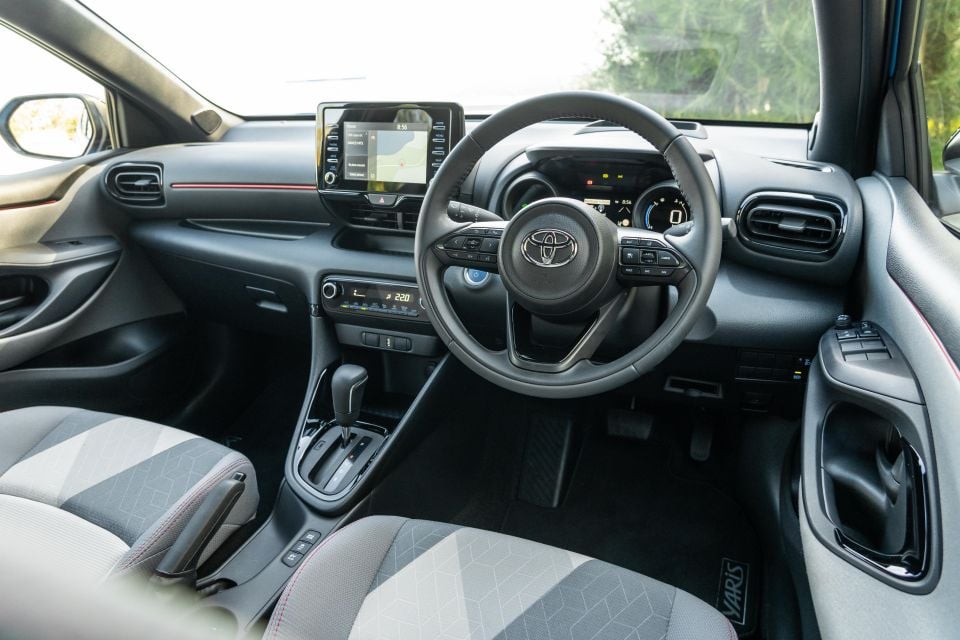
Open the door and you’re greeted by a range of eye-grabbing colours and textures mixed in with quirky design details – the first impression is a positive one.
It’s good to see Toyota has put in a similar level of effort to the interior as the exterior, in an effort to make the Yaris, particularly in this flagship ZR grade, feel like a more expensive car.
The overall design and layout of the cockpit is pretty standard Toyota fare if you’re familiar with its most recent models, but the Yaris gets its own steering wheel (which I love), and the SX and ZR get cool LCD dot-matrix dials flanking a TFT supervision display.
Like the Volkswagen Polo, the dashboard panel is trimmed in soft-touch plastic, and the leather-accented steering wheel feels nice in the hand. Poke and prod around, though, and you’ll start to notice the car’s budget car origins even in ZR spec.
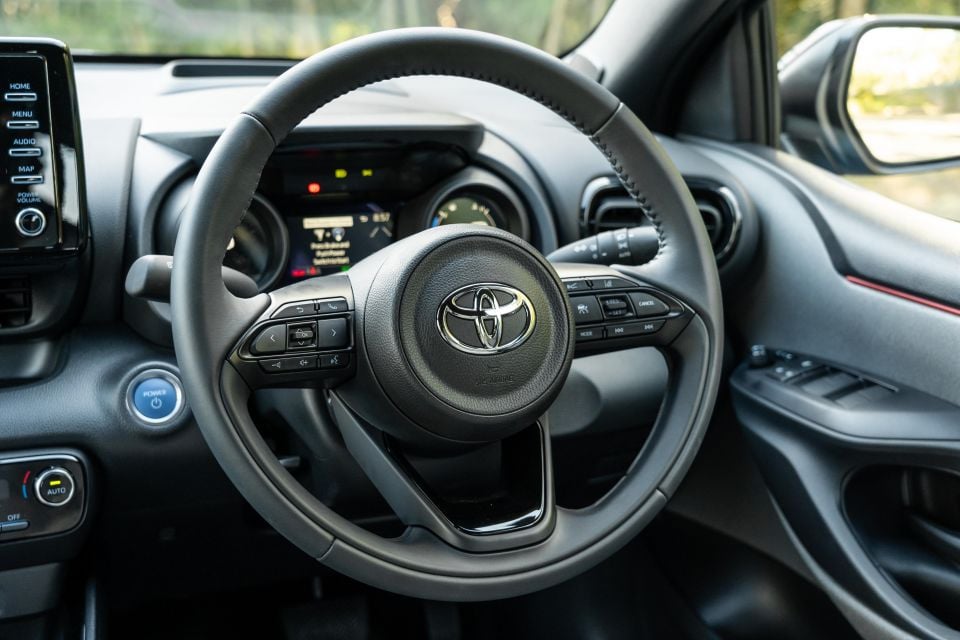
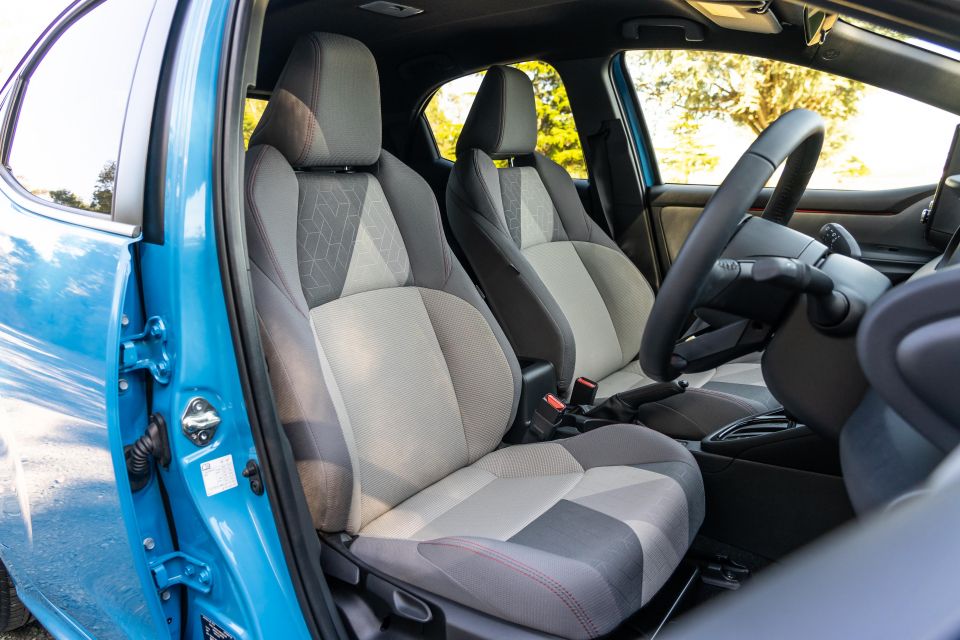

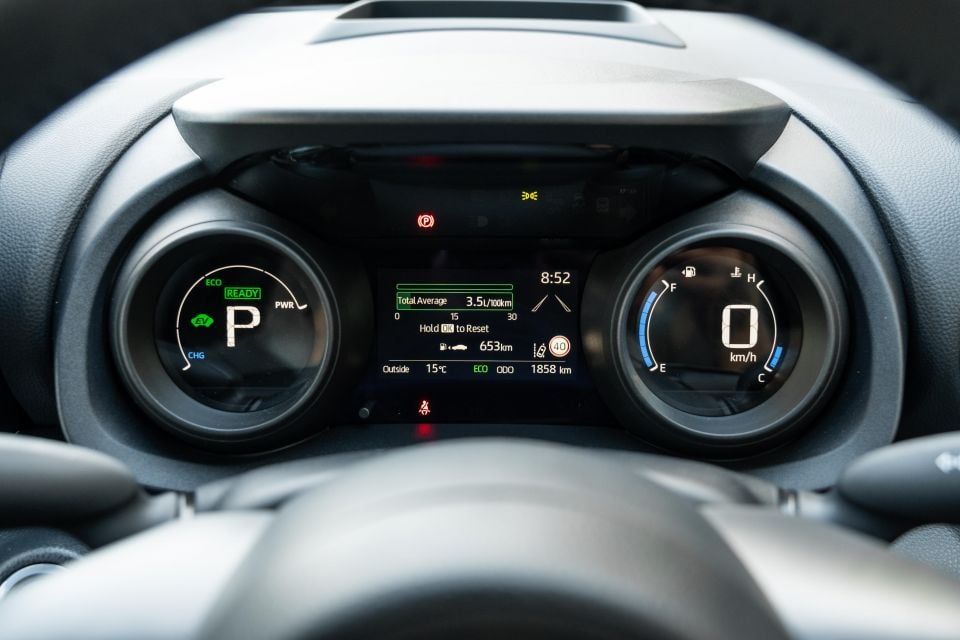
There’s hard, scratchy plastics about at the mid- and lower levels of the dashboard as well as the entire door trims, and the door inserts while cool to look at appear to be offcuts of the headliner material. They feel like furry cardboard.
Not everybody is going to like the ZR’s seat trim design, which with its light grey colouring and diamond pattern looks like it would belong on your dad’s knitted sweater.
Ergonomics are pretty good, though. The tablet-style touchscreen sits high and in the driver’s line of sight, the switchgear is simple and easy to use, while the instrument cluster and head-up display show all the necessary driver information and then some in a clear and logical fashion.
The front seats are pretty comfortable and offer a good range of adjustment, and the steering wheel likewise offers good levels of adjustment with both reach and rake movement.
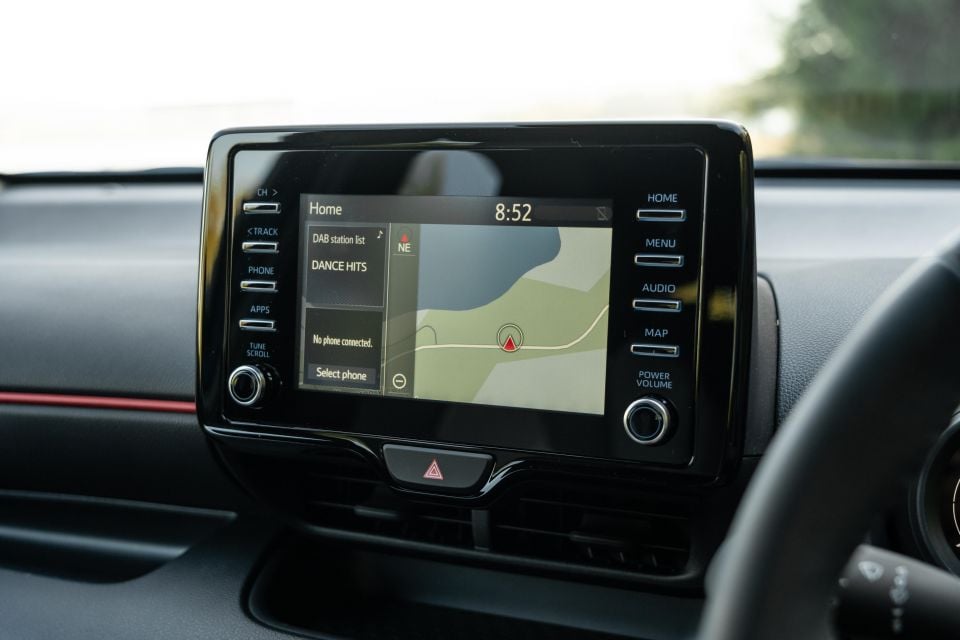
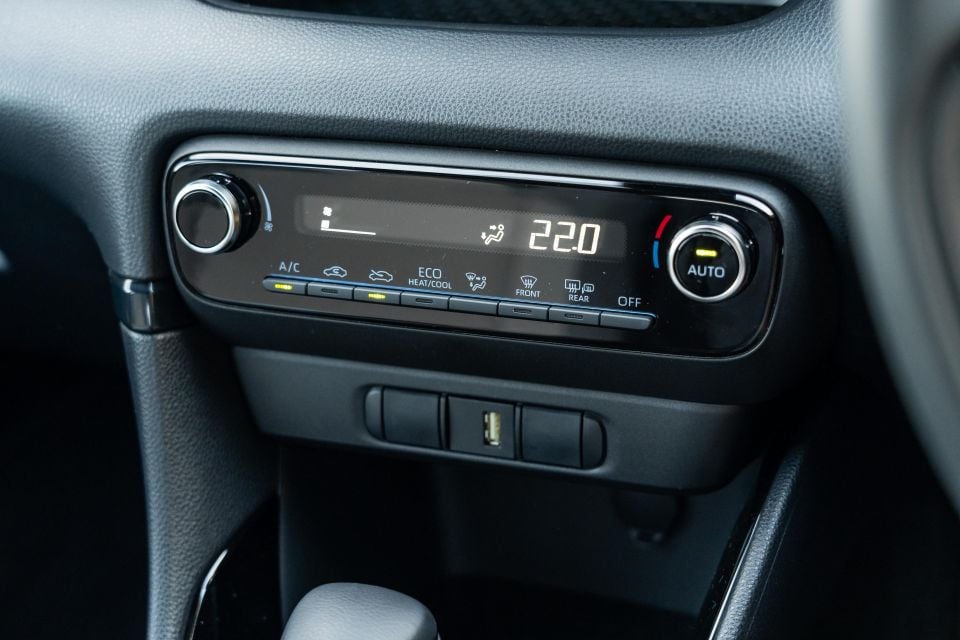

Storage up front is pretty good for a little car as well, with a tray on the centre stack large enough for your phone, another cubby ahead of the shifter, two cupholders along the centre console and an additional cubby where a front centre armrest should be.
Yes, there’s no front centre armrest with any specification, which seems a bit cheap given the premium pricing.
The 7.0-inch touchscreen navigation system has the same user interface seen in most current Toyota models, which is pretty basic and not the quickest at responding to inputs – it works fine for what it is, though.
Apple CarPlay and Android Auto are available through a wired connection, taking up the sole USB port on the centre stack. The first hook-up took a bit of time to load everything but after that it worked pretty seamlessly and arguably better than the OEM software.

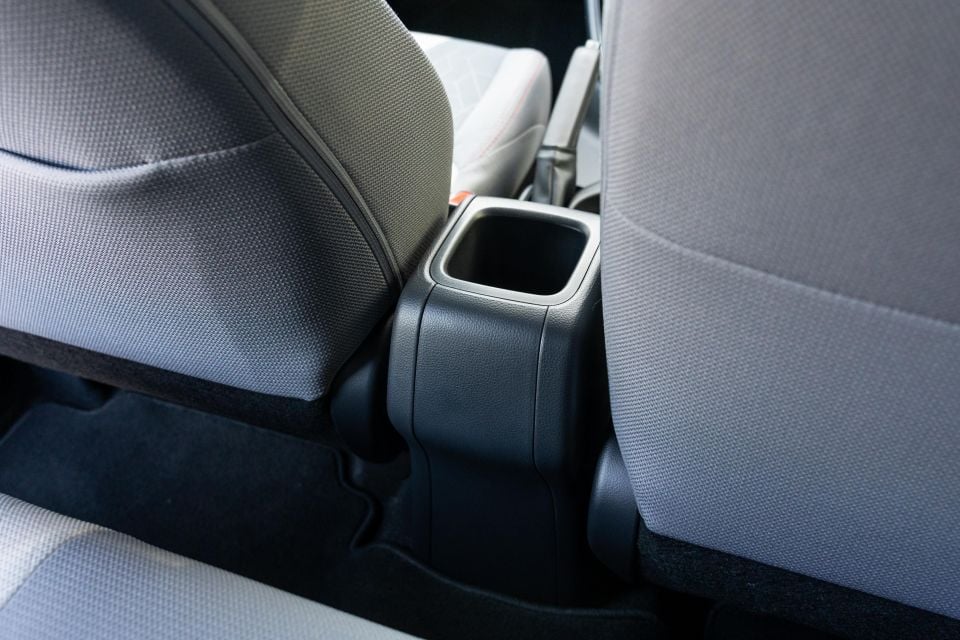
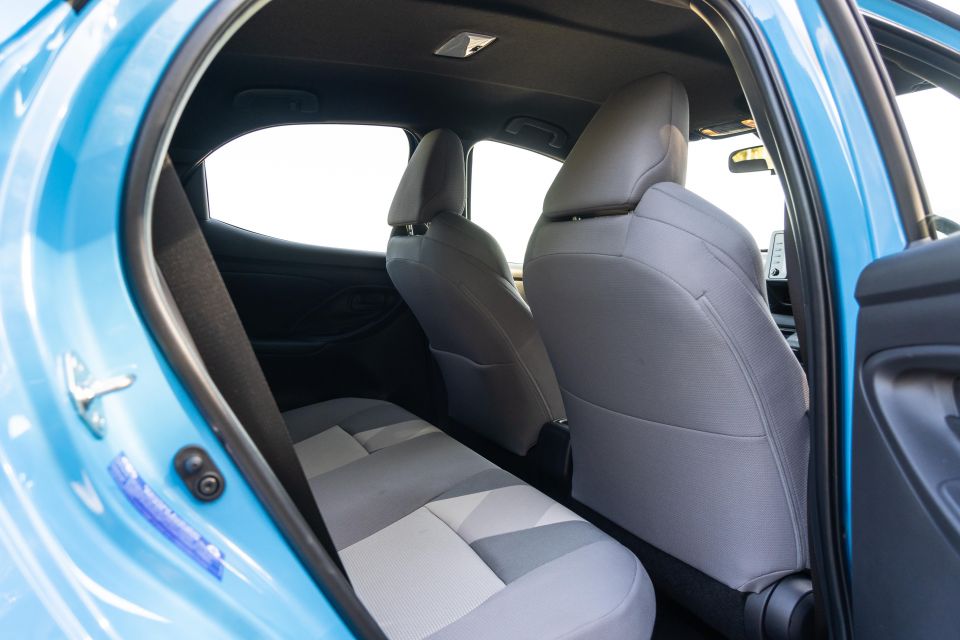
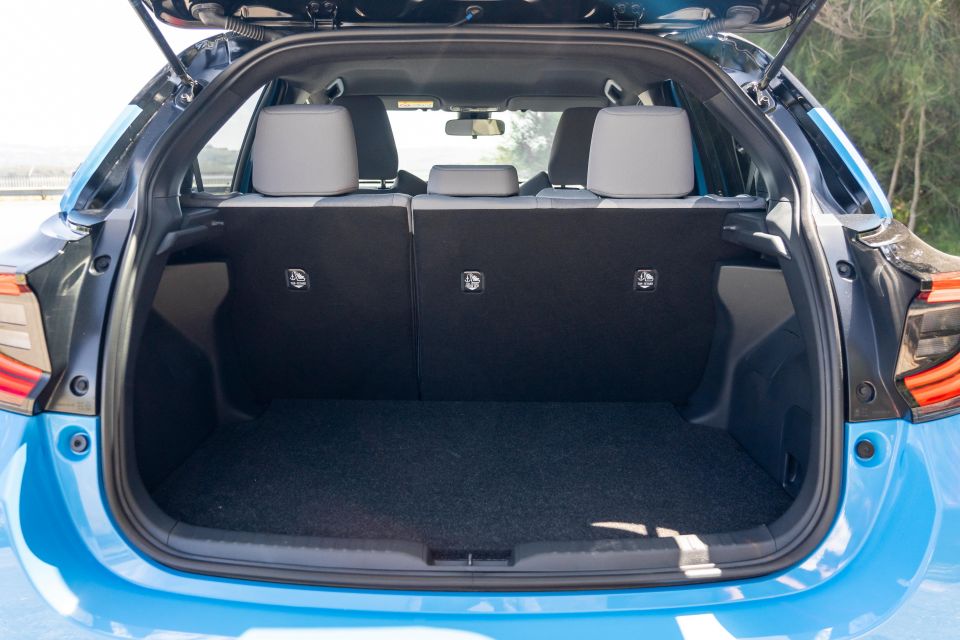
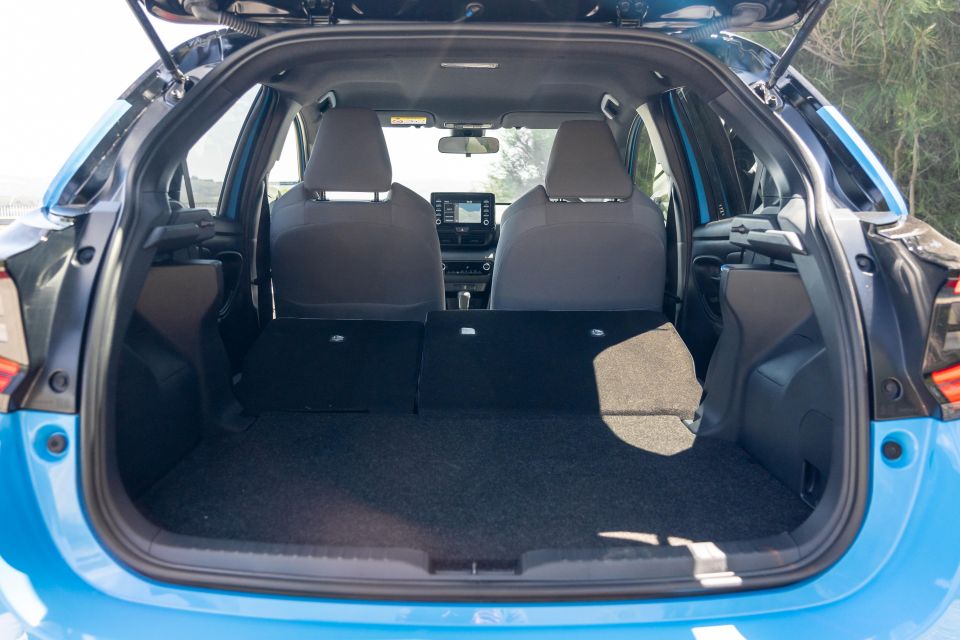
Moving into the second row, the Yaris doesn’t offer quite as much space as say, a Volkswagen Polo, but it’ll do the job for short trips should you need to cart around adults.
The second-row backrest is quite upright, and only has one recline setting. Behind my own driving position I wasn’t super comfortable, and that was with the car standing still.
Rear-seat amenities are few and far between, limited to bottle holders in the doors… and that’s about it. By comparison, the Corolla ZR gets rear air vents and a fold-down centre armrest for similar money.
Further back again there’s a claimed 270L of luggage capacity, which is more than most Corolla models but less than several rivals in the segment. The boot area itself is nice and square but is on the shallow side.
Under the boot floor is a temporary space-saver spare wheel.

Being the hybrid model, our Yaris ZR features a 1.5-litre Atkinson cycle three-cylinder petrol engine mated to an electric motor and small lithium-ion battery pack.
Toyota claims combined power and torque outputs of 85kW and 141Nm respectively, with drive sent to the front wheels via continuously variable transmission (CVT). Unlike petrol models, the CVT in the hybrid doesn’t have a proper launch gear.
Officially, the Yaris Hybrid claims to use just 3.3L/100km, making it one of the most efficient mainstream vehicles on sale.
It’s fantastic on fuel, too. We managed an indicated 3.4L/100km over a 50km test loop combining freeways, inner-city roads and urban highways. That figure dropped to 3.2L with more driving in town.
Either way, it’s pretty much bang-on Toyota’s combined claim of 3.3L/100km. From the Yaris Hybrid’s 36L fuel tank, you can realistically expect between 900 and 1000 kilometres per fill. It takes cheap 91 RON, too.
Should you not want the hybrid, the petrol-only Yaris features a similar 1.5-litre naturally-aspirated three-pot developing 88kW and 145Nm. The base Yaris Ascent can be had with a manual, while all other versions come as standard with a ‘Direct Shift’ CVT with launch gear for better take-off.

I don’t think I can put into words how much of an improvement the new Yaris is over the old one.
Just on features and tech alone it’s a world ahead, but on the road it’s almost a revelation.
Where the old model was slow, noisy and felt cheap, the new Yaris makes the most of its new TNGA underpinnings and offers a comfortable, fun and refined drive that makes it more of a mini Corolla.
The hybrid system’s more energy-dense lithium-ion batteries man the Yaris can engage electric mode more often and for longer compared than older nickel-metal hydride models, and the smaller and lighter body means it doesn’t have a lot of weight to shift.
Setting off is almost always done with electric power with progressive, measured throttle inputs, only engaging the petrol engine if you’re on an incline or if you’re trying to make a quick getaway. It’s smooth and refined, and perfectly suited to driving in city traffic.
Under heavy throttle, the three-cylinder thrum can be heard quite prominently in the cabin – almost a little too much. This was my first time driving a naturally-aspirated three-cylinder engine and that gravelly note is fine when you have the added torque from a turbocharger, but when revving hard more often it can be a little unrefined.
The change between EV and petrol-electric driving is pretty darn seamless though, and even at speeds of 80km/h the Yaris is able to coast along with no intervention from the petrol motor. Fuel consumption benefits greatly from this, too.
Like other TNGA-based models, the Yaris handles admirably given its positioning in the range, and is certainly up there with the best in the class for driver engagement. The tall, skinny body means there’s a little more roll in corners than in the Polo, but it’s well managed and natural enough. It’s not like buyers of this car are expecting sports car-like handling, anyway.
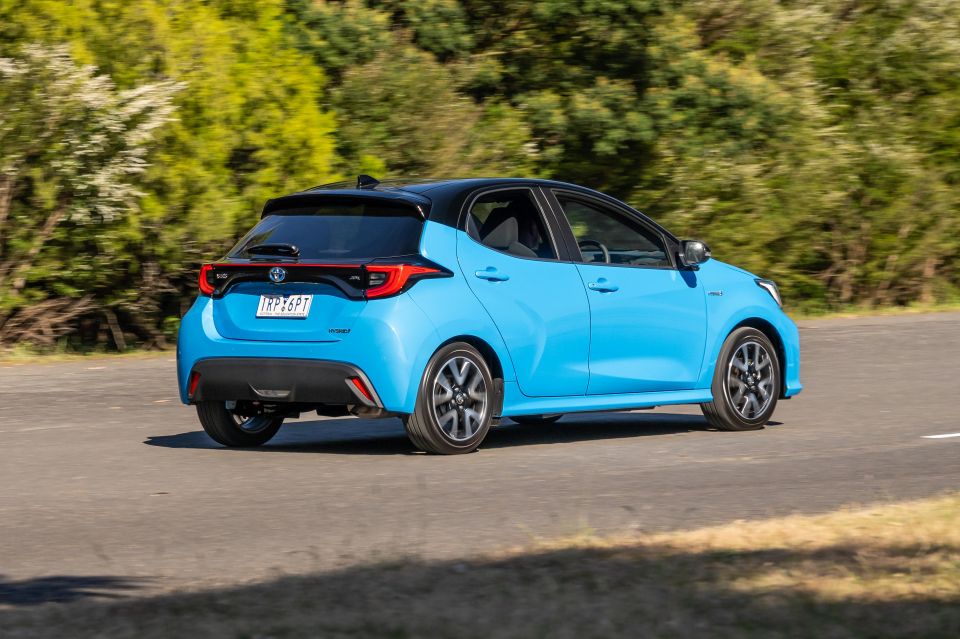
It rides well, too. Even with a torsion beam rear suspension system as opposed to the Corolla’s more sophisticated multi-link rear, the Yaris irons out the lumps and bumps of city roads nicely and settles well after larger hits like speed humps and potholes.
The cabin is generally well insulated from road and wind noise around town, but you will notice a bit of tyre roar on the freeway. Usually a key differentiator between high-spec light cars and mid-spec small cars is refinement, and the Corolla definitely offers a more refined drive on the open road.
We appreciated the abundance of driver assistance tech, such as the large head-up display, the lane centring system, and all-speed adaptive cruise control. Even though it’s a little car, blind-spot monitoring and rear cross-traffic alert come in handy when sneaking into a quick gap in traffic or reversing out of a tight parking space with poor visibility.
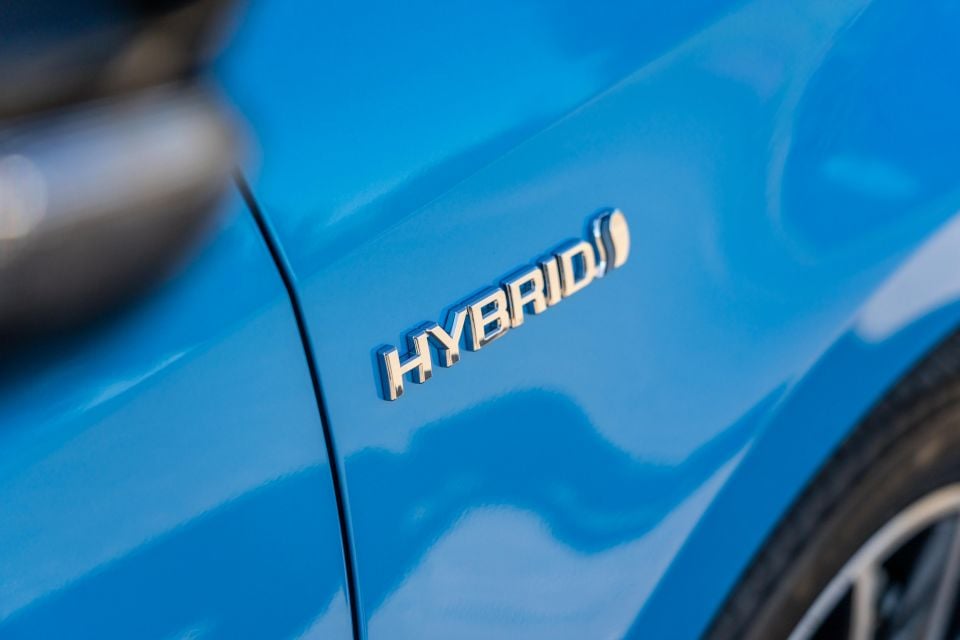
Where expert car reviews meet expert car buying – CarExpert gives you trusted advice, personalised service and real savings on your next new car.
The Yaris is covered by Toyota’s five-year, unlimited-kilometre warranty.
Despite the high purchase price, the Yaris is actually quite cheap to maintain. Servicing is required every 12 months or 15,000 kilometres, which ever comes first.
Each of the first four services (covering 48 months or 60,000km) cost $195, totalling $780 for that period.
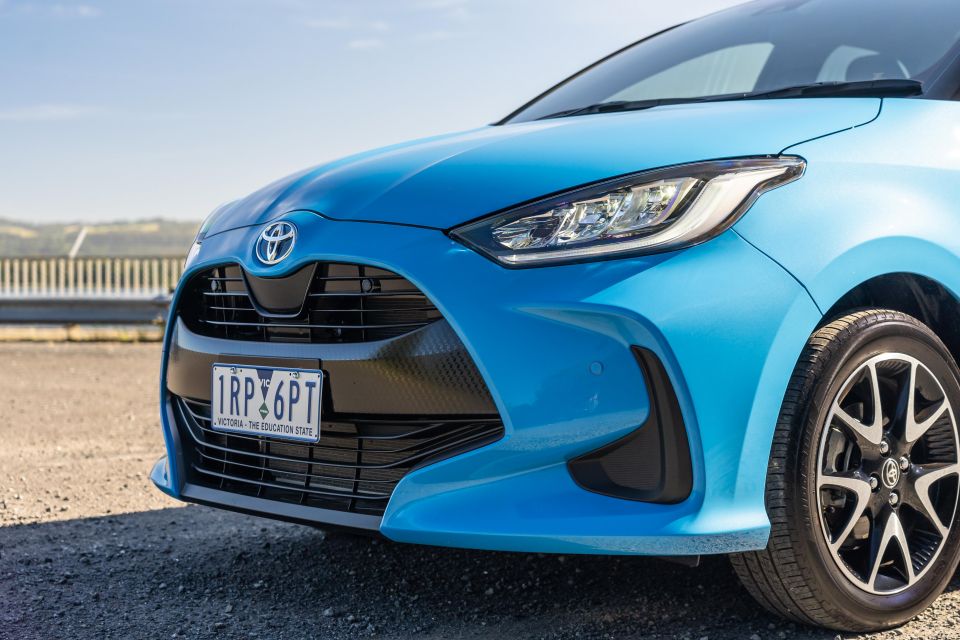
There’s no questioning the new Toyota Yaris is a very good little car, but in the case of the ZR Hybrid it’s more a question of whether it’s worth such a big spend.
All versions of the Yaris are quite expensive relative to rivals, but in the low- to mid-$30,000 bracket it’s hard to justify not throwing in another two grand for a top-shelf Corolla ZR Hybrid.
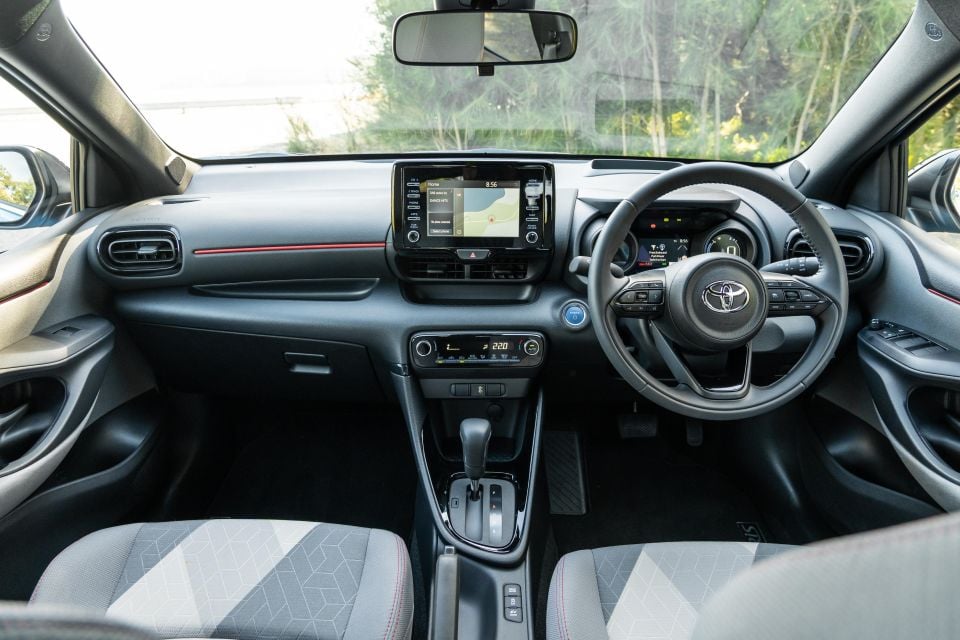
It doesn’t help the little Toyota lacks premium cabin touches to match the premium price tag, as the interior will be where you spend most of your time. The Yaris lacks the plush materials of a Mini Hatch, and the swish displays and overall cockpit design of an Audi A1.
A $29,990 drive-away price would have been easier to justify, but alas the positioning across the board for the new Yaris is a tougher sell, and will likely see volumes fall as a result.
But if you’re more focused on real-world efficiency, swathes of standard features, and a strong level of personalisation options, the Yaris ZR Hybrid could well be the car for you.

Click the images for the full gallery
MORE: Toyota Yaris news and reviews MORE: Toyota news and reviews
Where expert car reviews meet expert car buying – CarExpert gives you trusted advice, personalised service and real savings on your next new car.
James Wong is an automotive journalist and former PR consultant, recognised among Australia’s most prolific motoring writers.


William Stopford
4 Hours Ago


Ben Zachariah
5 Hours Ago


Derek Fung
6 Hours Ago


Matt Campbell
12 Hours Ago


William Stopford
1 Day Ago


Josh Nevett
1 Day Ago